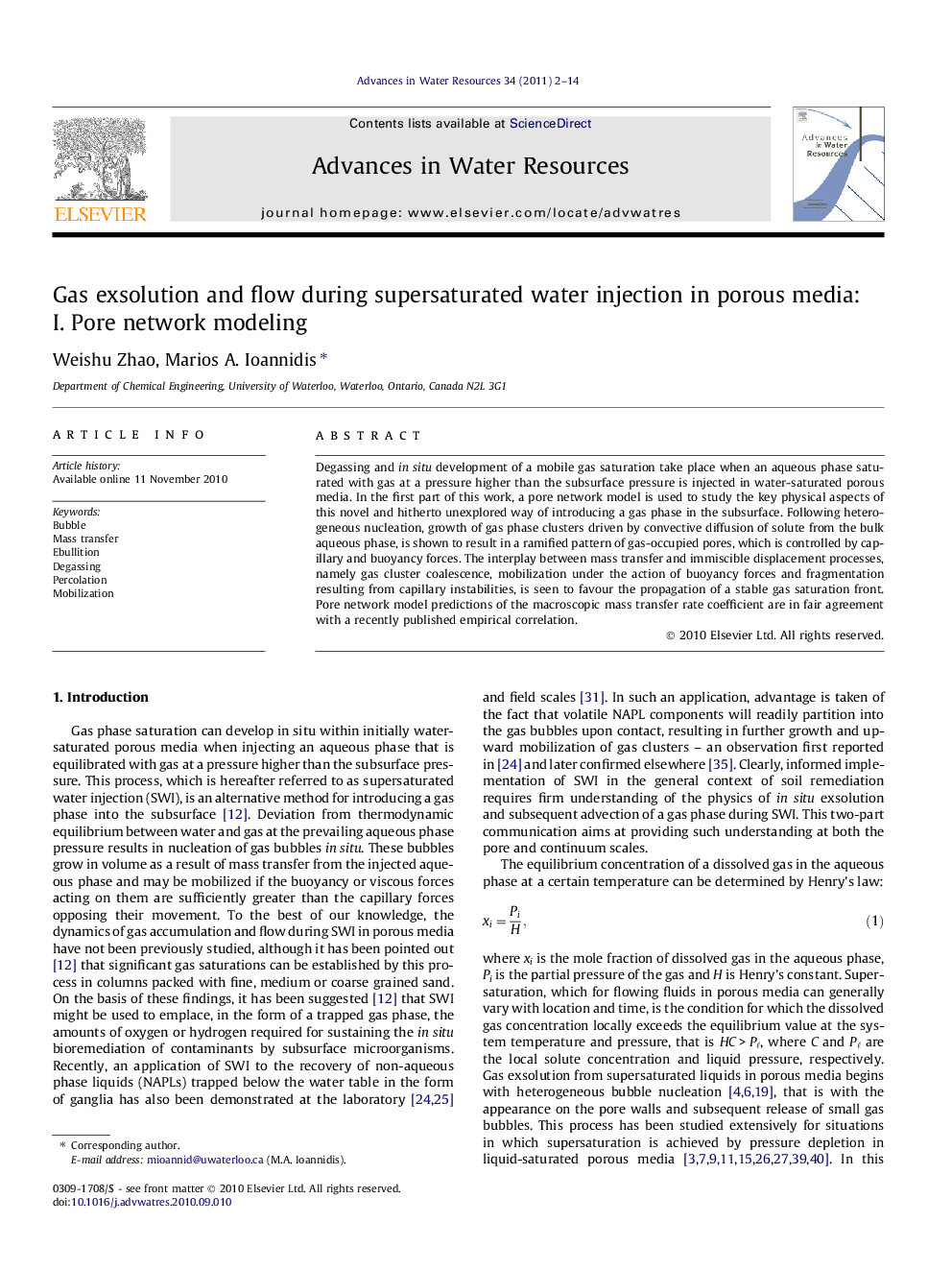| Article ID | Journal | Published Year | Pages | File Type |
|---|---|---|---|---|
| 4526247 | Advances in Water Resources | 2011 | 13 Pages |
Degassing and in situ development of a mobile gas saturation take place when an aqueous phase saturated with gas at a pressure higher than the subsurface pressure is injected in water-saturated porous media. In the first part of this work, a pore network model is used to study the key physical aspects of this novel and hitherto unexplored way of introducing a gas phase in the subsurface. Following heterogeneous nucleation, growth of gas phase clusters driven by convective diffusion of solute from the bulk aqueous phase, is shown to result in a ramified pattern of gas-occupied pores, which is controlled by capillary and buoyancy forces. The interplay between mass transfer and immiscible displacement processes, namely gas cluster coalescence, mobilization under the action of buoyancy forces and fragmentation resulting from capillary instabilities, is seen to favour the propagation of a stable gas saturation front. Pore network model predictions of the macroscopic mass transfer rate coefficient are in fair agreement with a recently published empirical correlation.
Research highlights► Supersaturated water injection in porous media is studied by pore network model. ► Simulations show coupling of immiscible displacement to nucleation and mass transfer. ► Supersaturated water injection gives rise to mass transfer-controlled gas cluster dynamics.
